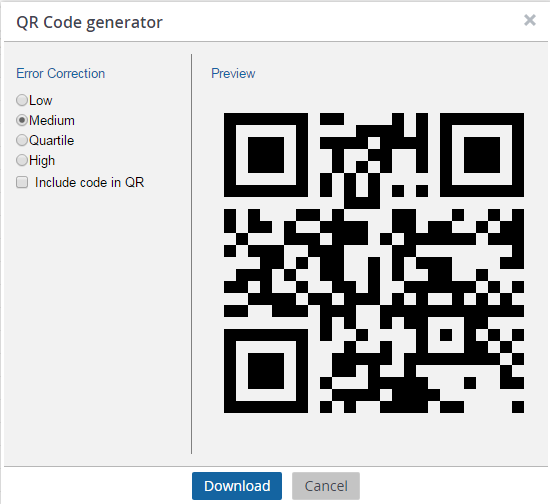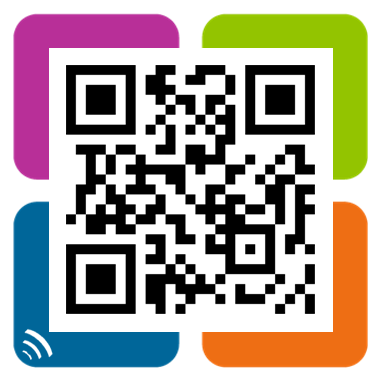Generating QR codes for fixed workspaces and make them bookable
You can generate QR codes for one or more fixed workspaces which can be scanned for various uses.
For example, a specific use case is to make regular, fixed workspaces bookable via Planon apps, without having to convert them to flexible workspaces. With this method you don't have to choose whether the workspace is ultimately fixed or flexible and you don't have to replace the QR code stickers. Making fixed workstations bookable does require some additional configuration.
Preconditions for making fixed workspaces bookable
You must link the fixed workspace that you want to make bookable to a flexible workspace in Planon ProCenter > > > , via the Workspace reference field.
Workspace QR code generation will only work properly if the workspace codes are unique within a property. |
Mobile app users can scan workspace QR codes to:
• Create reservations for a workspace registered as a 'fixed' workspace in Planon
• Report an incident on that workspace
• Check for any open incidents related to that workspace
• Check in and claim the workspace
Procedure for generating the QR code
1. In Spaces & Workspaces , go to the Workspaces & space data selection level and select Workspaces.
2. From the list of workspaces, select one or more workspaces for which you want to generate a QR code.
If multiple items are selected, different QR codes are created for different workspaces.
3. On the action panel, click Create QR code. The following screen appears:

The image size is set to Extra-Large by default.
When the Reference date is inactive, the Create QR code button is disabled for fixed workspaces. For more information on reference date, see Setting the reference date. |
4. Set the Error correction level to Low, Medium, Quartile or High. The error correction level of the QR code depends on what level you select.
It is recommended to select Medium. Codes generated in the medium level can be scanned faster and are good for office environments. If there is a need to create QR codes for industrial places, select the High error correction level. At this correction level codes can be scanned even if they are partly covered. The scanning, however, will take more time. The Quartile error correction level is useful when the QR code may suffer significant damage or distortion. |
5. Select the Include code in QR option if you want to include the code in the image.
Select this option only if it is necessary, as the code will be included in the file name of the image anyway. It is recommended to uncheck the Include code in QR option as the dimensions of the image will be disturbed when the code number is included.
6. Click on the Download option to generate the QR code.
A folder named QR-codes-FIXEDWORKSPACE.zip containing the QR-codes.csv file and QR codes, will be downloaded in the downloads folder of your computer. Extract the files from the .zip file to view the generated QR-codes.csv and QR codes.
The generated codes are stored in .png extension format and are transparent. It is not possible to choose another file extension. |
The generated QR code looks as follows:

If a flexible workspace is linked to a fixed workspace and you use the Print QR codes action, the QR code of the fixed workspace is printed instead of the QR code of the flexible workspace. |
7. Open the QR-codes.csv file to see data of the QR code.